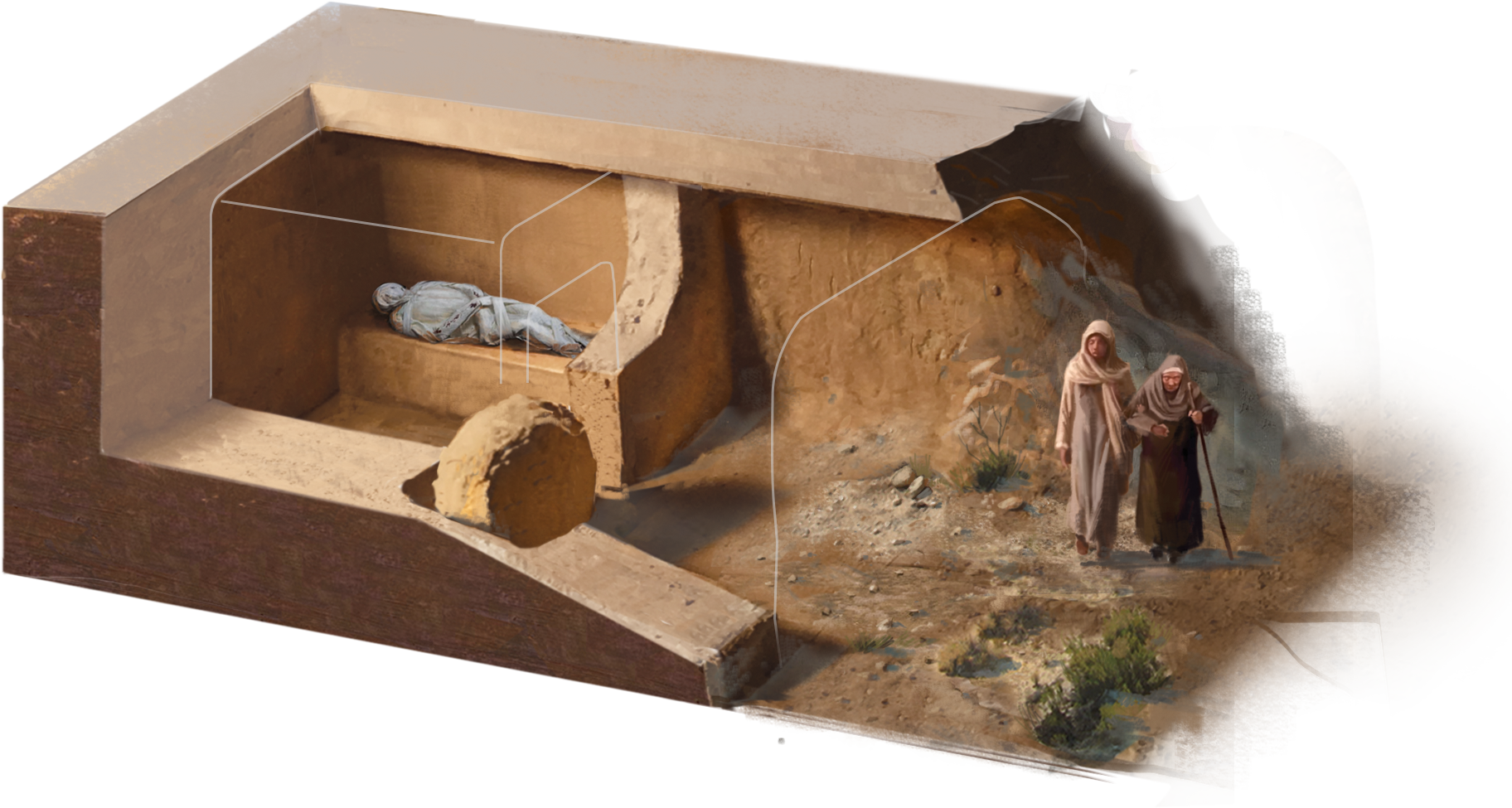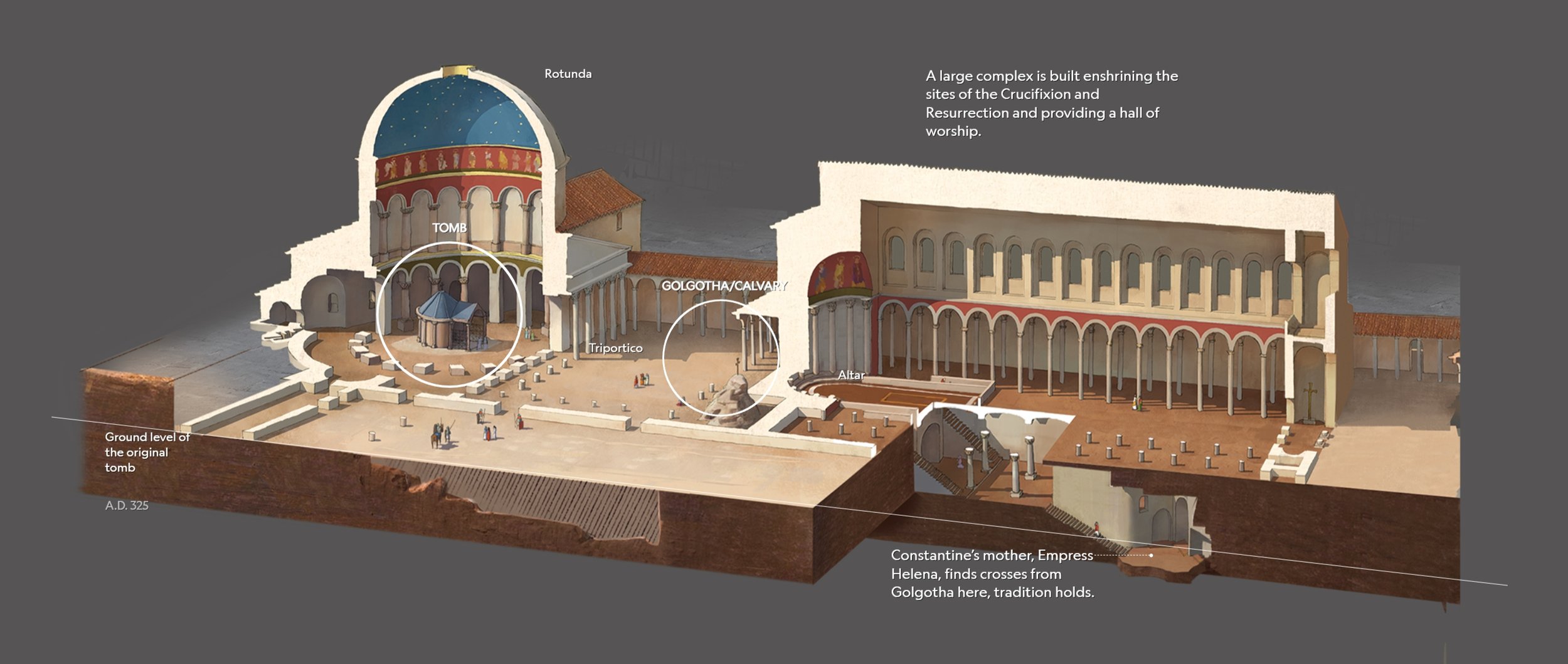The Church of the Holy Sepulchre, located in Jerusalem's Old City, is one of the most revered and significant sites in Christianity. It houses the Holy Tomb, also known as the Holy Sepulchre, where Jesus Christ is believed to have been buried and resurrected. The history of this sacred site spans centuries, marked by destruction, restoration, and architectural marvels. In this article, we will explore the historical structure process of the Holy Tomb, from a simple tomb to the magnificent Church of the Holy Sepulchre.
Rocío Espín Piñar, Collaboration for National Geographic magazine, December 2017.
The Early Years: A Simple Tomb
Rocío Espín Piñar, Collaboration for National Geographic magazine, December 2017.
The story of the Holy Tomb begins around 30-33 AD when Jesus Christ was crucified and subsequently buried in a new tomb, hewn out of rock. Located just outside the walls of Jerusalem, the tomb was believed to be owned by Joseph of Arimathea, a wealthy man who had become a follower of Jesus. Initially, the tomb was a simple, modest structure with a burial chamber and a rolling stone to seal the entrance.
The Roman Period: The Temple of Venus
In 135 AD, following the Bar Kokhba Revolt, the Roman Emperor Hadrian sought to suppress Jewish and Christian religious activities in Jerusalem. He ordered the construction of a temple dedicated to Venus, the Roman goddess of love, on the site of the Holy Tomb. This act of desecration obscured the tomb's location for almost two centuries.
Rocío Espín Piñar, Collaboration for National Geographic magazine, December 2017.
The Constantinian Era: Rediscovery and the First Church
In 325 AD, Emperor Constantine the Great embraced Christianity and embarked on a mission to locate the Holy Tomb. His mother, Helena, traveled to Jerusalem and ordered the demolition of the Temple of Venus. Excavations at the site uncovered the tomb, which was identified as the Holy Sepulchre. In 326 AD, Constantine commissioned the construction of the first Church of the Holy Sepulchre. The church complex included the Rotunda, an octagonal structure housing the tomb, and the Martyrium, a basilica for worship.
Rocío Espín Piñar, Collaboration for National Geographic magazine, December 2017.
The Early Islamic Period: Preservation and Modifications
In 614 AD, Jerusalem was conquered by the Persian Empire, and many Christian sites were destroyed. However, the Church of the Holy Sepulchre was spared, thanks to a letter of protection reportedly signed by the Prophet Muhammad. The Islamic Caliphates that ruled Jerusalem after the Persians made some modifications to the church, but the Holy Sepulchre remained largely unaltered.
The Crusader Period: Reconstruction and Expansion
In 1099, during the First Crusade, the Crusaders captured Jerusalem and set about restoring and expanding the Church of the Holy Sepulchre. They added several chapels, enlarged the Rotunda, and connected the church to the city's walls. The Crusader-era church was a magnificent structure, reflecting the wealth and power of Western Christendom.
Rocío Espín Piñar, Collaboration for National Geographic magazine, December 2017.
The Ayyubid and Mamluk Periods: Decline and Disrepair
Following the Crusaders' defeat by the Muslim forces of Saladin in 1187, the Church of the Holy Sepulchre fell into decline. While the site remained a pilgrimage destination, the church itself suffered from neglect, vandalism, and damage caused by earthquakes and fires.
The Ottoman Era: Restoration and the Status Quo
Rocío Espín Piñar, Collaboration for National Geographic magazine, December 2017.
In the 16th century, under the rule of the Ottoman Empire, the Church of the Holy Sepulchre was extensively repaired and restored. A decree issued by Sultan Suleiman the Magnificent established the Status Quo, a set of rules governing the shared custody and use of the church by the various Christian denominations. This agreement, which remains in effect today, has preserved the delicate balance between competing religious factions and has ensured the continued conservation and maintenance of the church.
The Modern Era: Preservation and Ongoing Challenges
In the 19th and 20th centuries, various international stakeholders took an interest in the preservation and restoration of the Church of the Holy Sepulchre. The British Mandate authorities carried out important structural work during the 1920s and 1930s, while in 1959, the Orthodox, Catholic, and Armenian Apostolic communities agreed to a major restoration project, which included the removal of centuries-old layers of accumulated debris and the installation of a new marble cladding on the exterior of the tomb.
Rocío Espín Piñar, Collaboration for National Geographic magazine, December 2017.
More recently, in 2016, a multinational team of experts carried out an extensive restoration of the Edicule, the small chapel that encloses the Holy Tomb. The project involved the removal of a supporting iron cage, which had been in place since the early 20th century, as well as the cleaning and consolidation of the original stone surfaces.
The history of the Holy Tomb, from a simple tomb to the magnificent Church of the Holy Sepulchre, reflects the complex and often turbulent history of Jerusalem itself. Over the centuries, the site has been a symbol of unity and division, a place of worship, and a battleground for competing religious, political, and cultural forces. Today, the Church of the Holy Sepulchre stands as a testament to the resilience of faith and the power of cooperation among diverse communities, as well as a reminder of the importance of preserving our shared heritage for future generations.















